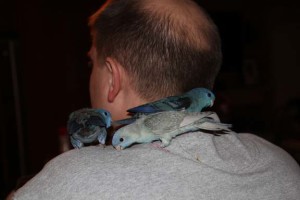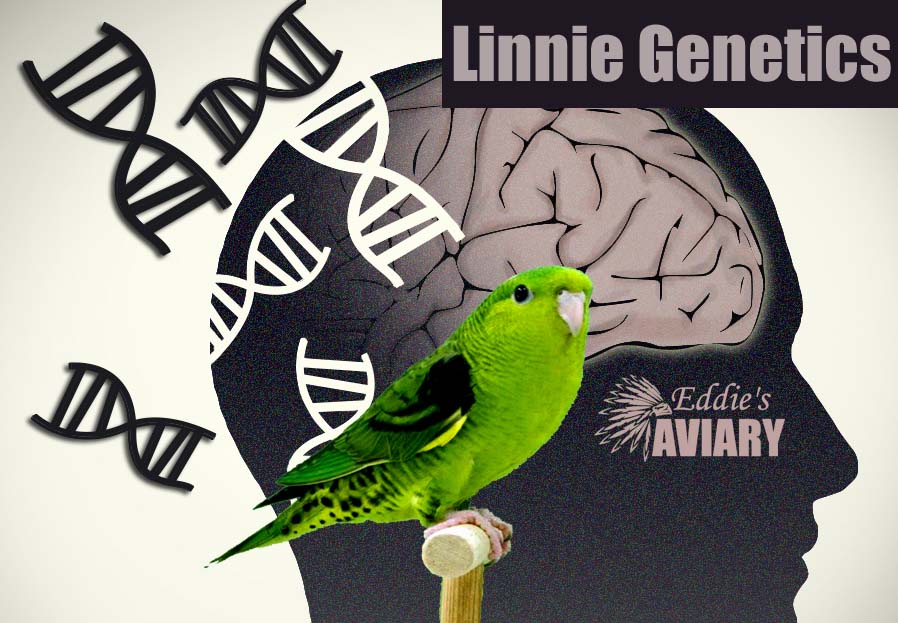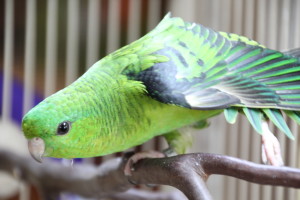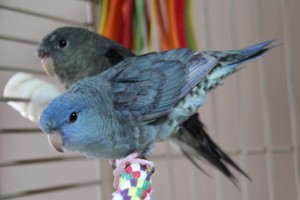The Lineolated Parakeet comes in many different colors, also known as mutations. There are two different series of mutations known as the Green Series and the Blue (Turquoise) Series. This information may seem overwhelming at first, but I promise if you keep looking at it…. one day it just clicks! Linnie Genetics are amazing, sometimes surprising and fun!
Dark factors , usually seen in written descriptions as D or DD, genetically create different colors. It is said they are “darker” which they are, but the tonal value changes as well. The standard “green” which is the wild color (and my personal favorite) is without a dark factor. Dark Green (D Green) has one dark factor, and an Olive (DD Green) has two dark factors. When these factors are paired to a Greywing (sometimes mistakenly called dilute) it can alter the hue yet again… cool stuff!
Green Series birds are: Green (Normal or Wild color), D Green (Dark Green), DD Green (Olive) and Lutino.
Blue Series birds are: Turquoise, D Turquoise (Cobalt), DD Turquoise (Mauve), and Creamino.
Visit our Mutation colors page to see photographs and descriptions of each mutation.
Greywing Mutation
Greywings are an additional alteration of the Green and Blue Series mutations and they are referred to as single factor and double factor. All female birds (hens) when single factor have the same color appearance (called a phenotype) as a double factor male (cock) or female (hen). Cocks come in both visual single (sf) and double factor (df). The effect or strength of the dilution (fade of the black signature barring) observed on a double factor male is more severe than a single factor male.
Below is a single factor greywing d turquoise (cobalt) male. The barring and tail spots are a muted color, not the strong black in normal non-greywing birds.
Hens are always single factor, but will always look double factor. Knowing parentage will help make the determination if visual sexing is possible. We NEVER pair two greywings together, so any double factor looking greywing birds will always be a hen.

Single factor Greywing Cobalt hen at center – see how she looks like a double factor? All hens will have no barring at all, looking double factor…. even if single factor in genotype.
© COPYRIGHT 2015 Eddie’s Aviary
Genetic Inheritance
Just like with humans and all other animals, genetic inheritance varies. Green is dominant over the blue series. If both birds carry a recessive gene, even if not a visual bird…. A visual recessive bird can result. Ino (Creamino and Lutino) mutations are sex-linked. The Greywing mutation is sex-linked as well and considered an incomplete dominant trait.
Hens can only be split turquoise, but males can also be split ino. Very rare in the United States, but some birds have no splits. The only true way to tell if a bird has splits is to test breed it.
Several online Genetic Calculator Tools have been created and are used to virtually evaluate offspring mutation possibilities from test breeding.
Here is our favorite online genetic calculator.. Contact us if you would like help using it, or would like help making good pairings.
We like to always pair a green series bird with either another green, or a blue. We never pair blue to blue, ino to ino, or greywing to greywing. We practice responsible breeding practices.


